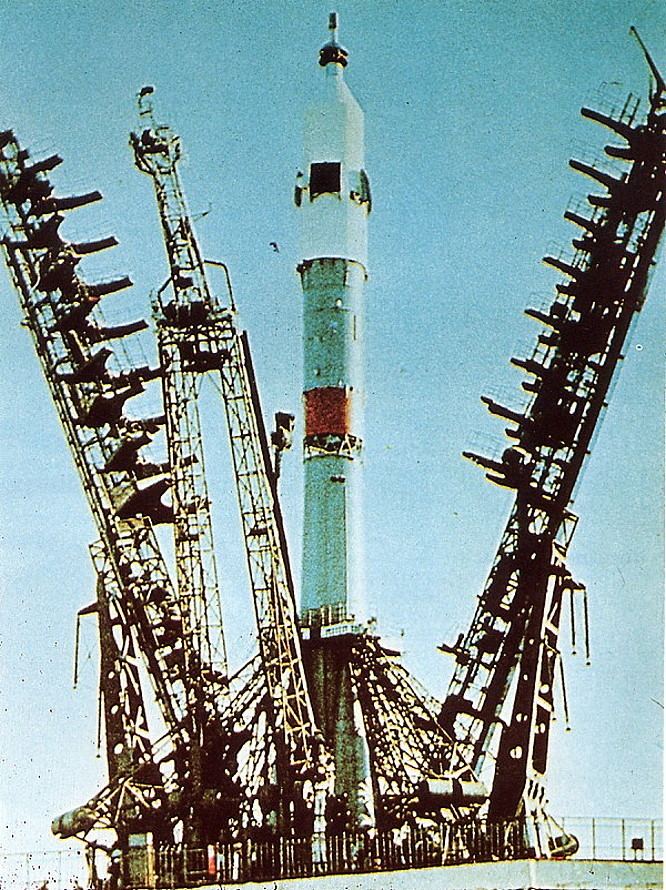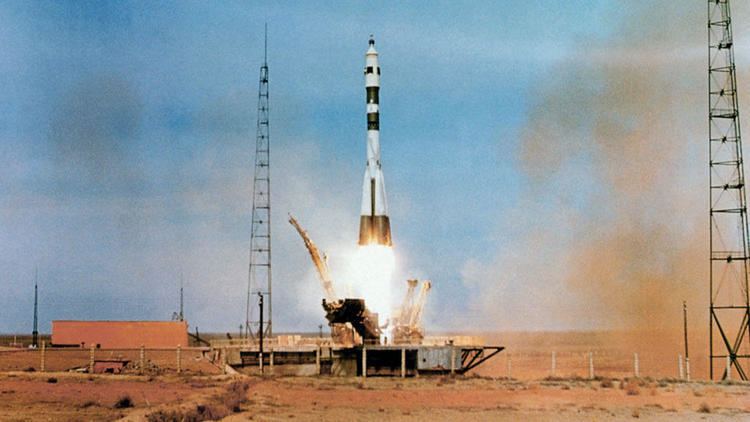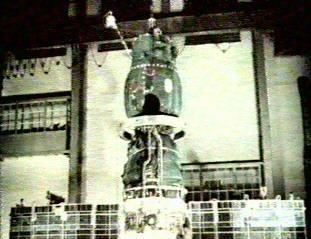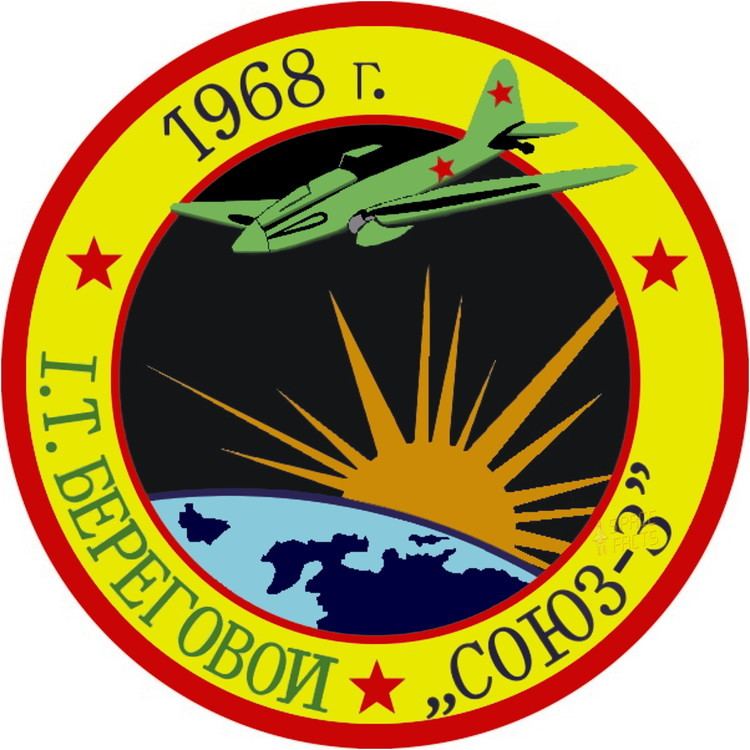Mission type Test flight COSPAR ID 1968-094A Dates 26 Oct 1968 – 30 Oct 1968 Landing date 30 October 1968 | Orbits completed 81 Period 1.5 hours Launch date 26 October 1968 | |
 | ||
Mission duration 3 days, 22 hours, 50 minutes, 45 seconds | ||
Soyuz 3 ("Union 3", Russian: Союз 3) was a spaceflight mission launched by the Soviet Union on 26 October 1968. Flown by Georgy Beregovoy, the Soyuz 7K-OK spacecraft completed 81 orbits over four days. The 47-year-old Beregovoy was a decorated World War II flying ace and the oldest person to go into space up to that time. The mission achieved the first Russian space rendezvous with the unmanned Soyuz 2, but failed to achieve a planned docking of the two craft.
Contents

Mission parameters
Background

The Soviet space program had experienced great success in its early years, but by the mid-1960s the pace of success had slowed. While the Voskhod programme achieved the first multi-crewed spaceflight and first extravehicular activity, problems encountered led to its termination after only two flights, allowing the United States to surpass the Soviet achievements with Project Gemini. The Soyuz programme was intended to rejuvenate the program by developing space rendezvous and docking capability, and practical extravehicular activity without tiring the cosmonaut, as had been demonstrated by the US in Gemini. These capabilities would be required for the Salyut space station program. Soyuz 1 had been launched with the goal of docking with the manned Soyuz 2 craft, but even before the second craft was launched, problems with Soyuz 1 made it clear that Soyuz 2 had to be canceled before the landing of Soyuz 1. This saved the lives of the three-man Soyuz 2 crew; Soyuz 1 ended with the death of cosmonaut Vladimir Komarov on 23 April 1967, due to a faulty parachute system. Soyuz 2 would have flown with the same defective system as Soyuz 1. As a result, the Soyuz spacecraft was revised for Soyuz 2 and Soyuz 3 in 1968.
Spaceflight

Soyuz 2 was launched on 25 October 1968 as an unmanned target vehicle for Soyuz 3, which was launched the following day. The more conservative mission used Beregovoy as the single pilot, with Vladimir Shatalov designated as his backup, and Boris Volynov in reserve. Entering orbit and near Soyuz 2 a half-hour after launch, Beregovoy gradually guided his craft within docking range (200 meters (660 ft)) of his target.
However, Beregovoy failed to achieve docking. He failed to notice that Soyuz 2 was turned upside-down in relation to his craft, and used up too much of his maneuvering fuel in the attempt.

He made a second rendezvous and docking attempt the next day, but again failed. Hours later, Soyuz 2 was sent back to Earth and landed by 8:00 am the next day. Beregovoy continued to orbit, making topographical and meteorological observations for the next two days. Beregevoy also treated television viewers to a "live" tour of the spacecraft interior. In addition, the Soviets published a photo of Soyuz 3's launch vehicle on the pad at Baikonur, marking the first time that the R-7 was shown to the outside world.
Return

Beregovoy and Soyuz 3 came back to earth on 30 October 1968, after completing 81 full orbits of the Earth. The re-entry vehicle landed near the city of Karaganda in Kazakhstan, fortuitously cushioned by a blizzard's snowfall. Despite subzero temperatures, Beregovoy's landing was so easy he said later that he hardly felt the impact at all. The Soviets hailed Soyuz 3 as a complete success. Beregovoy was promoted to Major General and named director of the national Center for Cosmonaut Training at Star City.
Soviet secrecy

The launch of Soyuz 2 had not been reported by the Soviet Union, although other nations were aware through their own monitors. It was not until Soyuz 3 was safely aloft that an official announcement was made.
The Soviet government concealed the fact that docking had been unsuccessfully attempted. Contemporary Western news reports described the orbital mission of Soyuz 3 in the same manner as the Soviet press, referring to a "successful rendezvous" with Soyuz 2, but characterizing it as a test with no actual ship-to-ship docking planned. This interpretation was largely accepted for years afterward. The intended docking was disclosed only after the breakup of the Soviet Union, allowing historians to reassess the presumed "success" of the mission.
Legacy
The flight of Soyuz 3 had numerous effects on future space exploration both short- and long-term. The flawless recovery of Soyuz 3 left the spacecraft designers with the impression that re-entry and landing systems had been perfected: the crash-landing of the Zond 6 satellite just one month later had been partly attributed to this mistaken sense of security. The value of the outer space survey of earth was a defining step in the development of the Soyuz program's grand strategy: the later evolution of space-based research platforms have roots in Beregovoy's lengthy and meticulous data-collection. Even the failure of the space docking proved an experiential benefit to the Soviet space program: after the demoralizing catastrophe of Soyuz 1, the credible achievements and safe return of Soyuz 3 breathed new life into the faltering program. New flights continued apace, and they put the knowledge gained from Soyuz 3 towards missions of increasing audacity and success.
